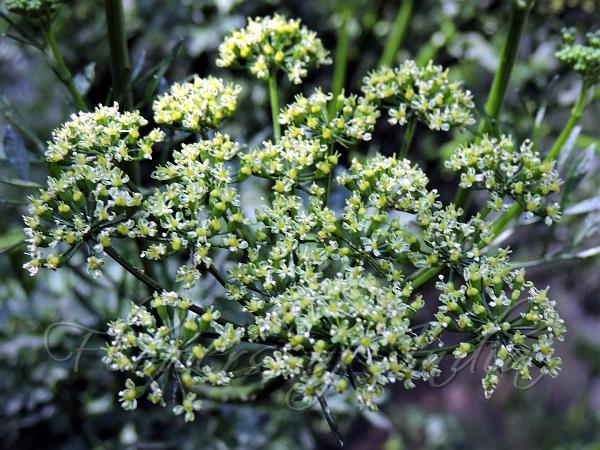|
| Parsley |
|

|

|
|
|
|
Photo: |
Botanical name: Petroselinum crispum Family: Apiaceae (Carrot family)
Parsley is flowering plant native to the central
Mediterranean region, but has naturalized elsewhere in Europe, and is
widely cultivated as a herb, a spice, and a vegetable, the world over.
It can grow as a biennial, where in the first year, it forms a rosette
of tripinnate leaves, 10-25 cm long, with numerous 1-3 cm leaflets and
a taproot used as a food store over the winter. In the second year, it
grows a flowering stem with sparser leaves and umbels with yellow to
yellowish-green flowers. The leaves are arranged alternately,
1-3-pinnately compound, dark green, glossy, flat or curled and with
sheath at the base. The leaf-stalk is longest in the lower leaves. The
pinnae are long-stalked, with obovate-wedge-shaped to finely linear
leaflets, which are divided into pointed segments. The higher leaves
are gradually less divided while the topmost leaf consists of a few
pointed segments only. Parsley is frequently used for garnish or
flavouring salads and many cooked dishes. However, it has too strong a
flavor to be eaten in quantity for most palates.
| Identification credit: Anil Thakur | Photographed in cultivation in Shimla, Himachal Pradesh. |
• Is this flower misidentified? If yes,